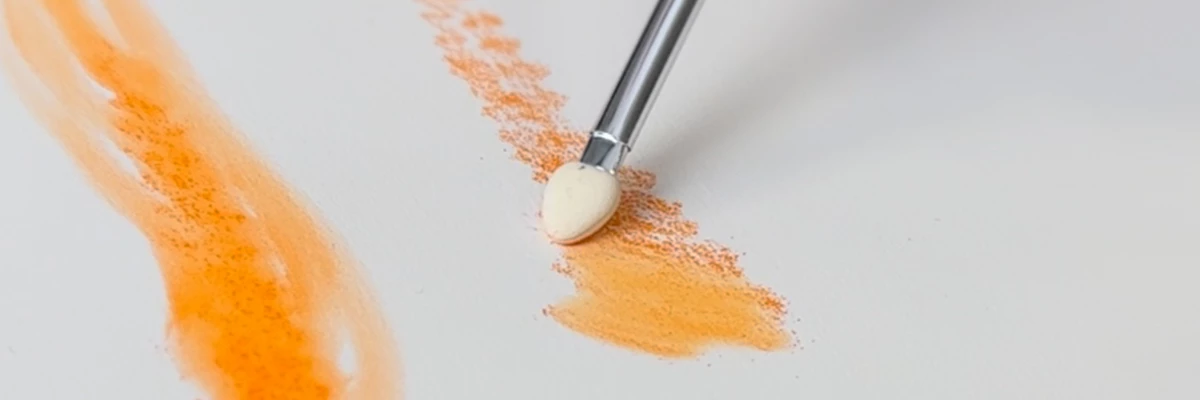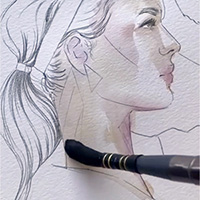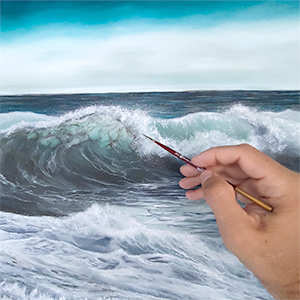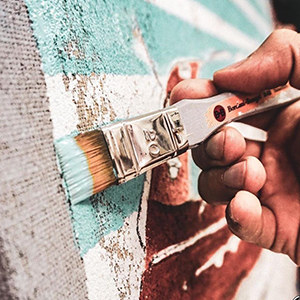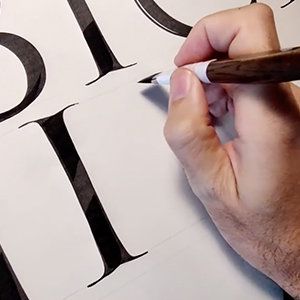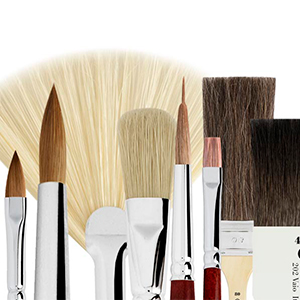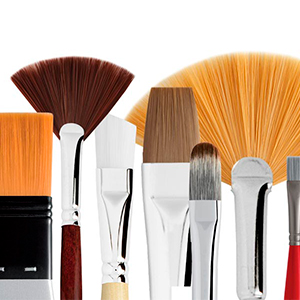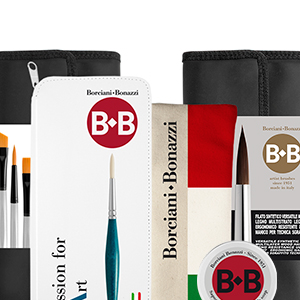Dry pastels and soft pastels: how to use crayons?
Dry or Soft Pastels
Dry or soft pastels are painting and drawing tools, generally cylindrical or rectangular in shape, born from mixtures of pure pigment of extremely thin and binding powder color, which can be of various nature and will change the drying characteristics, brilliance and method of use.
Air drying and oxidation creates these spectacular color-laden sticks to create wonderful works.
Not to be confused with colored chalks, and widely used by artists until the last century, pastel brushes have been rediscovered in recent years by students and amateurs for the brilliance and vividness of the tones.
Often in the common imagination, pastels are bound to the pictorial activity of children, but they are real colors to create layers and effects of unprecedented depth.
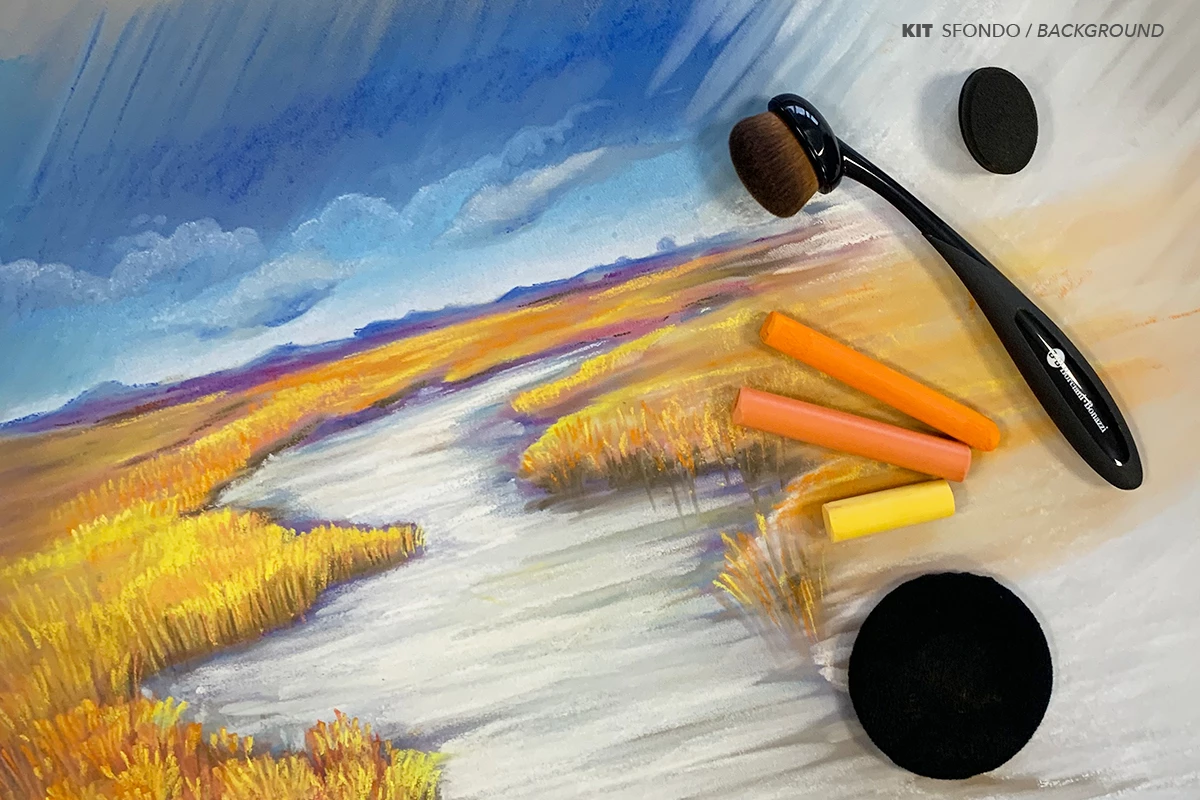
The History of dry pastels and soft pastels
If we want to go back to the beginning of drawing history we could even talk about Neolithic, with the use of burnt coals to trace on the rocky walls scenes of everyday life, but we would talk about modern charcoal, which are without binder within the composition.
It is not possible to date the precise birth with regard to the use of pastels in art: an evolution that, starting from the fusion of some previous techniques, led to the pastel as we know it.
The first pastels were born with the Renaissance, in which the artists used, especially in the preparatory phase to the work, clay sticks, chalk, calcite and charcoal. Leonardo da Vinci is a shining example of how pastels were used to illuminate and shade dry, along with sanguine, preparatory drawings.
Rudimentary crayons of black, red, ocher and whitish shades, which applied on the previously laid color illuminated the shades.
The first to use pastel drawings as a work and not as a preparatory sketch, were the Flemings, in the figure of the painter Jean Clouet. From the first half of the 1500s the portraits made with pastels spread in Northern Europe, characterized by a softness and vividness of colors that made the work unique.
In Italy the use of pastel as a means of drawing and painting made its way only towards the end of the seventeenth century, with the Venetian painter Rosalba Carriera and her splendid portraits of the nobility of the time.
Between France and Italy the use of pastels became an indispensable element in the eighteenth century in the realization of portraits: soft and "alive" remain today works of difficult imitation with other techniques.
The masterpieces of Nanteuil, Viviena, Vouet, Le Brun and Mellan, and Liotard in the following century, are just a few names to mention to get an idea of the pastel works.
Light, soft and pasty, full of pigment, it reminds us of a breath of color with endless variations of tone: in the 800 and 900, almost all the greatest masters of Impressionism have used pastels in their works. From Degas to Manet, Monet and Renoir, to the famous studios of Pablo Picasso.
Today soft pastels are produced by the best companies in the Fine Arts industry, with outstanding results.
Composition and differences between pastels
With the generic term "crayons", various types of product can be indicated: wax pastels, oil pastels, dry or soft pastels... Sometimes, wrong, even chalk!
To orient in this vast panorama the main distinction to make is that of the binder with which the pure pigment is mixed to prevent it from being dispersed:
Dry crayons
Composed of pure pigments with a small part of binder of vegetable origin, such as Arabic gum, and depending on the percentage of this binder can be distinguished in soft pastels or hard pastels, sometimes called crete.
Many historical producers try not to automate production too much in order not to lose the link with tradition, trying to produce pastels in the same way as in the past. Air-dried in special cylindrical or rectangular shapes, these crayons should be used for rubbing on porous surfaces with the dry technique, which we will deepen.
Crayons
Composed of pigment and mixed with natural beeswax or waxy substances in versions suitable for children, these crayons release a patina of dense and pasty color, which for overlapping creates multiple shiny and brilliant tones. They can be used for rubbing on porous surfaces and if heated with a hair dryer at high temperatures to dissolve a part of the waxy component give rise to the encaustic technique.
They can also be processed with special pointed tools to create the sgraffito.
Pastel brushes are commonly used in the early stages of learning painting techniques with children.
Oil Crayons
Composed of pigment and linseed oil, they are real stick oil colors that never dry. Extremely bright and full-bodied can be used as crayons and then diluted as needed with turpentine and solvents of various origins to dry quickly and create drafts on canvas, as if we used normal oil paints.
They are used by rubbing on surfaces prepared for the absorption of the oily part, such as prepared canvas for painting, wooden tablets or cardboard prepared in plaster.
They are basically the most known crayons and used today, for the flexibility of use.
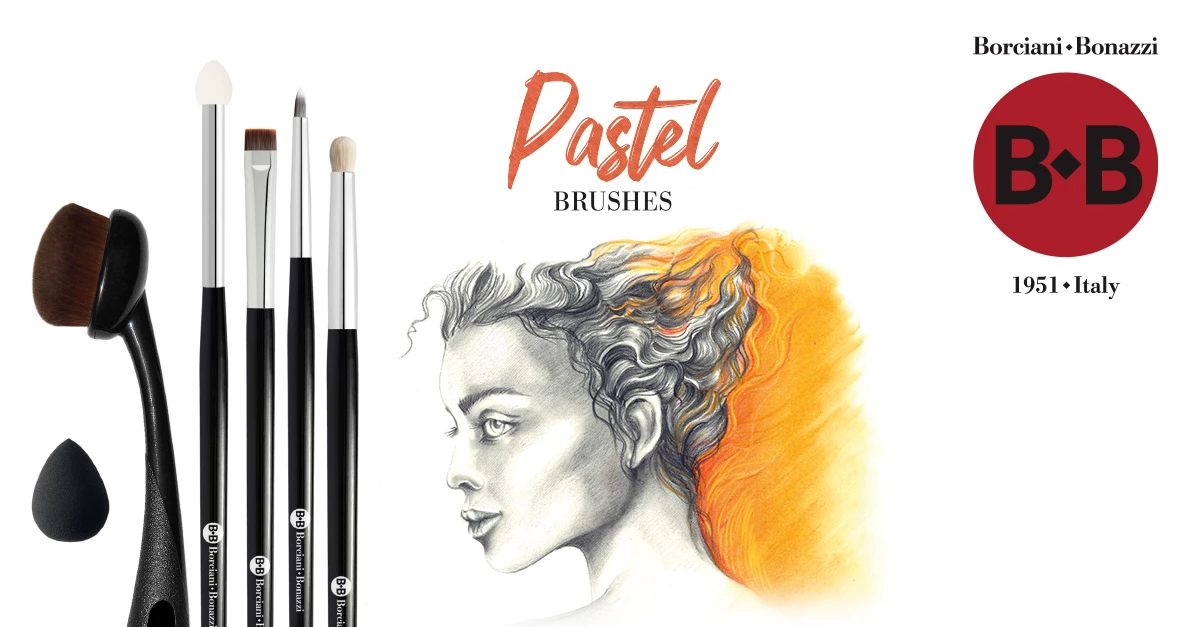
Media and Instruments for pastels
Crayons always have high percentages of pigment, resistant to light but not to contact rubbing
For this reason it is good to use them on grainy and porous surfaces, such as paper, primers prepared with chalk or acrylic mortars, but always with a semi-rigid base or on the support.
If we used a canvas, the same pressure of the filling gesture would have negative effects on the lines and the backgrounds.
Pastel paper is always the best choice, regardless of the painting technique with which we are working and its main feature is its roughness, verifiable by sight or touch. There are semi-rough and rough papers for soft pastels, whose porosity and texture retains the volatile pigment of soft pastel. Obviously the texture of the paper will have a texture effect in the color that you will see, allowing each artist to choose the most suitable for the result he wants to achieve.
The rougher the paper is, the harder it will be to draw thin, straight lines and work on the details.
In soft pastels, colored papers are often chosen, for greater light effects working in overlap.
There are artists who use porous fabrics or velvet to paint with pastels, every choice is the result of research and personal experimentation.
For wax crayons, the ideal support is smooth paper or slightly rough supports, which will help the waxy part to "smear" in thinner layers. The milder the temperatures and the warmer the artist’s hands, the greater the yield of the wax color.
In the case of oil pastels we will use a paper Canvas or Mix Media, tenacious and absorbent, able to accommodate the oily part of the color; otherwise traditional media prepared for painting.
How to use crayons?
To draw the first basics of drawing on paper with soft crayons, you will use a thin pencil or a fine tool, especially to paint a subject with many details.
There are many techniques: usually on colored and dark cards you use a light pencil to give more contrast, while on a light paper will be preferable cuttlefish pencils or black.
Some artists try to draw the profile in a very light way, then hide it with the color that will be applied immediately after and redefine it during the work.
Other styles immediately define a clear profile and shady areas with chiaroscuro technique, realizing what in oil painting is called "underpainting".
The same applies to the more detailed contours of the painting: it would be impossible to trace them with the dry pastel that has a larger size and smaller tip. For this, special pencils are used that have the same composition of soft pastel but with greater binder, then slightly harder, and thinner tip.
The pressure of the stroke deposits the color on the texture of the paper, but sometimes to make the first layers adhere perfectly you can use your fingers, a smudge in paper or special brushes called "toothbrush"Synthetic fibers, soft and thin that maintain a good elasticity are ideal for adhering the pigment to the support in the first steps, and create large backgrounds.
The brush is soft and very compact, removes the excess of pigment making the pastel perfectly adhere to the first layers of processing, creating very soft shades in the funds and large backgrounds.
The interchangeable heads between synthetic hair and microperforated sponges are very useful are: the layering with the help of the sponge head are thin and allow overlapping in large spaces without traces, with immediate elimination of excess pigment.
The Series PASTEL BRUSHES KIT 1 BACKGROUND
The Series PASTEL BRUSHES KIT 1 BACKGROUND was created to facilitate the laying of soft pastel funds.

Kit 1 Pastel Brushes: Backgrounds consists of a brush, an interchangeable head of the same shape in soft sponge and a velvet Pad wearable to download the brush.
Soft and compact synthetic fiber oval shape, to avoid leaving traces in the soft matter of pigment, the brush allows you to create large uniform backgrounds.
The head is interchangeable:
the compact and low-elasticity synthetic pile for perfectly adherent backgrounds to the support becomes a soft sponge for backgrounds in thinner overlay layers.
They are ideal for Soft Pastel and charcoal in the first steps of processing.
The velvet Pad is wearable on the fingers and retains the excess pigment, thus facilitating color changes and shading. It can be used at any stage of processing and also with the Details Kit to clean up the brushes and with the Blending Kit to download the excess before proceeding to coloring.
Crayons can be used as pencils and used for cutting, drawing medium or thick lines. The line will not be sharp and precise, due to the friability of the pigment, and the result will change by increasing and decreasing the pressure of the pastel on the paper.
By using the crayon horizontally, larger areas can be filled quickly. Depending on the pressure will settle more or less color on the sheet.
The colors are mixed only by overlapping on the paper or on the chosen support, starting from the darkest shade towards the lightest.
The rougher cards allow more layers of color, which will merge with each other.
The effect that can be obtained is in part similar to what you do with the veils in oil painting, of extreme lightness and softness.
With each layer of color that overlaps, the pigments will not mix with those below, but will add up, giving rise to deep and vibrant final shades.
The same result can be obtained using hard crayons or clay.
In the creation of a design we will alternate first large backgrounds and suitable for creating funds, and then overlap them layer on layer with increasingly precise lines getting details and details to the limit with hyperrealism.
With precise hatching or line, if we want a uniform and "photographic" effect in the work, we will use suitable tools to blend in total precision even the thinnest strokes.
If the beginner uses paper sticks of different sizes called "smudges", with low and sustainable costs to students and amateurs, the professional often uses specific brushes: generally with microperforated sponge heads or synthetic fibers of medium elasticity, have tips of particular shape suitable for different types of stretch.
The Series PASTEL BRUSHES - KIT 2 SHADES WITH INTERCHANGEABLE HEADS
The experience of the great artists of Make-Up shapes and sizes

The Series PASTEL BRUSHES - KIT 2 SHADES WITH INTERCHANGEABLE HEADS steals from the experience of the great artists of Make-Up shapes and sizes, transforming them into brushes to blend light and delicate tones that create the coloring textures of the work.
Composed of:
- a short brush with sponge tip and interchangeable head
- 3 replacement heads
- 2 micro-perforated and soft teardrop sponges for shades with defined lines
The brushes for soft shading of small and medium size have the sponge tip with rhombus sections, and are very useful for interchangeable heads, which help to speed up the work of overlapping without "soiling" the color.
Also indicated in the charcoal or graphite stroke, they stabilize the gradient on the design creating soft and light half-tones. Pressure variations and movement following the shape leave delicate strokes of highlights and shading; the pigment powder can thus be spread even in the smallest detail and made light and soft simply with a slight rubbing that leaves no traces in the design.
Teardrop sponges are necessary for medium-sized backgrounds and light shades that are lost in the background color. If you want to use a more precise line, they are used with the tip; the pressure of the fingers determines the degree of softness of the sponge, which will leave a soft or sharper trace following the artist’s intent.
Ideal for soft graphite pencils, soft charcoal pencils, fusaggine, charcoal, soft pastels, soft colored and sanguine pencils.
The Series PASTEL BRUSHES- KIT 3 DETAILS
The Series PASTEL BRUSHES- KIT 3 DETAILS is a great help in defining the details and the last touches of finishing the work, for greater definition of the lines and the creation of details.
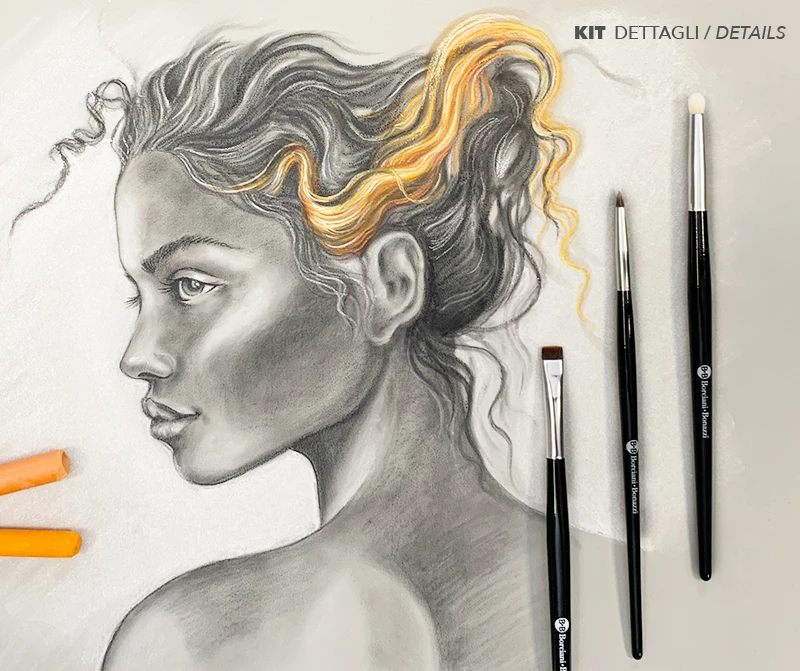
The set of brushes for details consists of 3 completely different shaped brushes and the synthetic fiber tips are very different from each other to optimize the lines used with a slight shade without loss of precision.
It consists of:
- a round and short tip brush made of soft and light synthetic fibre, ideal for blending the lighter tones into the upper layers of the work without leaving any obvious traces. You will choose mainly for small fields. The fibers of medium elasticity, thin but compact are well suited to light shades, moving the pigment on the paper without leaving traces.
- a flat tip brush with a very short and slightly rigid synthetic fibre to highlight lines and defining details. It helps to define precise lines slightly shaded on the edges: the medium hardness of the yarn allows the pigment to adhere well to the support without removing it
- a short conical tip brush made of soft and elastic synthetic fibre, for the definition of points and small details, ideal in the most precise detail. The conical tips, very compact at the base and lighter at the tip allow you to blend even the smallest detail gently. The pointed head helps in the finer details.
Also ideal for soft graphite and charcoal, the Detail Kit can be used in all dry techniques to define the final works.
Oil Crayons
The oil crayons having within the composition a higher dose of binder of oily type have a completely different use; bright and pure colors, that have nothing to envy to those obtained by the 'tube' oil colors while not requiring the use of medium or turpentine.
They are easy to carry en plein air since they do not require additional substances or special accessories, they can be used everywhere.
You can use oil pastels on many types of media: rough and porous paper, but also cardboard, wooden boards and cardboard.
As already mentioned the texture of the canvas pulled on a frame makes it impossible to work with fingers that has a certain pressure and would make the base mobile. For someone the texture of this media is not compatible with the tightness of the crayons.
The paper must be very thick fine-grained/ coarse, although the processing on glossy cards is ideal. Alternatively, you can use perfectly planned and polished wooden planks to be perfectly smooth.
The same applies to the use of crayons.
If we need dilution in the first layers to create chiaroscuro effects, we can use traditional brushes for oil painting, from bristle to marten if we choose natural hair and synthetic fibers suitable.
The more rigid the fiber and the more precise the details, the softer and lighter will be the final effect.
The synthetic Plum yarn has excellent resistance and elasticity and is suitable for both the drafting of details both dry and solvent dilution. The pressure should be light to prevent the color from coming off the base.
The synthetic Gold yarn, on the other hand, will be suitable for dry processing: given the soft elasticity of the thin fibers, the oil pastel will not be removed but will take on less thickness and greater transparency.
#natural hair brushes, #brushes for oil painting, #kit 1 background, #kit 2 sfumature, #kit 3 dettagli, #serie 50, #serie 51, #serie 52, #Martora Kolinsky, #Martora Kolinsky Sintetica, #serie 100, #serie 101, #serie 102, #pennelli sintetici, #filato prugna, #serie 1, #serie 2, #serie 3, #sintetico oro, #serie 85, #serie 86, #serie 87
.

